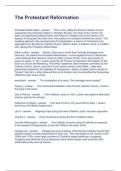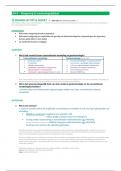Samenvatting
Summary Molecular Principles of Brain Disorders: NEURODEGENERATION
I passed the exam with an 8.5! Note: - This summary only contains the part about neurodegenerative diseases - The lecture slides on psychiatric diseases are sufficient to learn for this exam - the summary is very extensive and you should start learning early on!
[Meer zien]













